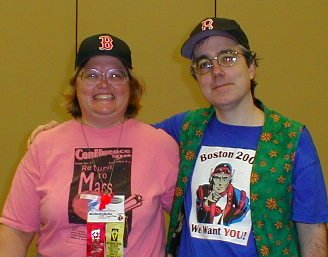Resurrection Men by Ian Rankin
Most of Rankin’s output centers around Detective Inspector John Rebus of
As Resurrection Men starts, Rebus is being sent to
Meanwhile, the case Rebus was pulled off of, the murder of an art dealer, is being handled by others, most notably DI Siobhan Clarke. Clarke, superficially, is Rebus’s opposite. But in deeper, more fundamental ways – in particular the way she is driven to find out what really happened – she is much like him. She is the only one he really trusts, and she trusts him and listens to him, even when others ride her about it.
Rankin does a masterful job of taking these two stories – both interesting mysteries in their own right – and gradually pulling them together. As he does, parts of the past, and more of Rebus’s character, are revealed. The path leads both Rebus and Siobhan (who really is adopting more of Rebus’s bravado and his courage) into confrontation with Big Ger Cafferty (the chief gangster of
Nearly half the book belongs to Siobhan and her part of the investigation. Over the course of the series, she has grown from being one of a cast of side characters to now almost sharing the lead with Rebus. She’s really blossomed both as a character and as a criminal investigator. We are beginning to know her almost as well as we know Rebus. Moreover, Rankin has allowed her not only to grow in terms of character depth and maturity but to learn her job. She’s now a very good inspector, and could hold up her own series if Rankin is inclined to spin off a series (or if he decides to kill of John Rebus at some point).
I won’t say much more at this point, since part of the enjoyment of this type of novel is watching things unfold. I’ll just say that Rankin and Rebus have both come a long way – gotten deeper and more interesting – as the series has progressed. I have the next two Rebus novels on my shelf, and hope to read at least one more over Christmas break.


0 Comments:
Post a Comment
<< Home